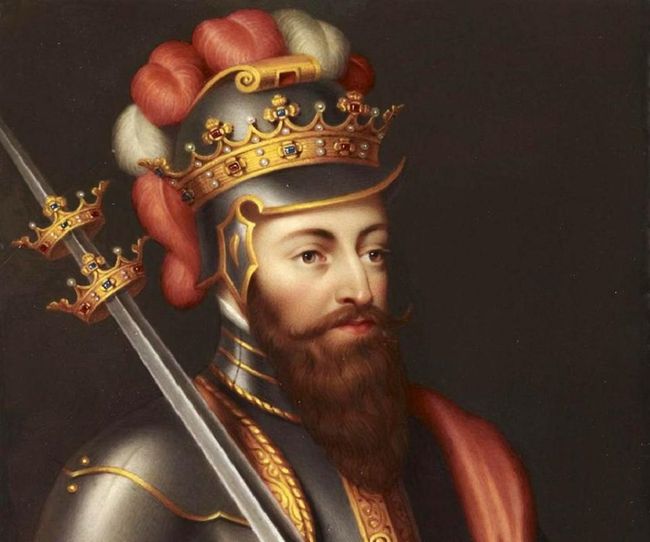600 - 1449
KNIGHTS IN ARMOR
The arms and armor used by medieval warriors changed over time with new developments in weapons and improved technical skills in shaping metal.
A knight needed to be proficient in handling many different kinds of weapon and had to be able to defend himself against similar weapons wielded by his opponents.
In the early middle ages men fought with axes, spears, swords, and bows and arrows, either on foot or on horseback, and protected their bodies with short-sleeved shirts of chain mail made of interlocking metal rings.
Plate armor began to be developed in the 13th century as a defense against more efficient crossbows, which fired bolts that could pierce soft mail.
Armor was also sometimes made from leather hardened by boiling.
By the mid-15th century knights were completely encased in suits of shining armor, draped with their heraldic coats of arms.
METALWORKING
Advances in the technology of metalworking played a large part in determining what knights wore.
In the 10th and 11th centuries soldiers carried a shield as a first line of defense.
They wore a coat of chain mail with a hood covered by a helmet that protected the head.
Only a nasal guard covered the face.
Sections of plate supplemented the chain mail over the centuries.
By the 15th century soldiers and horsemen wore full plate armor, made from multiple sheets of metal, and no longer needed a shield.
While armor provided practical protection, chivalrous and romantic ideals inspired the knight in battle.
His lady would give him a piece of her clothing - a sleeve, veil, or belt - to tie to his armor as a token of her favor.
HERALDRY
Heraldry began as a means of identification in battle.
It combined tinctures (colors) with charges (symbols) to make individual patterns used on shields, armor, banners, hangings, and crests.
A precise language describes these "blazons" and emblems could represent a quality or virtue: Geoffrey of Anjou (d.1151) carries a shield with the charge "Azure (blue), four lions rampant Or (gold)".
公元600 - 1449年
盔甲骑士
中世纪战士使用的武器与盔甲随着武器的改进与金属塑形技术的发展,在随时更新。
一个骑士需要精通许多不同种类的武器,而且要能必须对抗他们对手手中挥舞的相似武器。
中世纪早期人们用斧,矛,剑以及弓箭,还有用脚,或在马背上骑行进行战斗,他们会用金属圆环相扣制成的短袖链条衫来保护身体。
平面盔甲在十三世纪得到发展,例如防御进攻更有效的中世纪武器弩,可以刺穿柔软的链条衫。
有时甚至煮沸皮革使其硬化后,制成盔甲。
到十五世纪中期,骑士们都已经全部穿着闪亮的盔甲,披挂着带纹章的大衣。
金属制品
金属加工技术的进步很大程度上决定了骑士穿什么。
在十和十一世纪,士兵们拿盾牌作为抵御第一道防线。
他们穿着一件链条衫外套,戴着头盔保护头部。
脸上只有鼻子被面罩保护到。
平面盔甲对几个世纪以来的链条衫作了补充。
到了十五世纪,士兵和骑手都穿着全副的平面盔甲,由多片金属制作而成,也不再需要盾牌了。
如果说盔甲为他们的身体提供了实际保护,那么侠义与浪漫主义精神则激发了骑士们的斗志。
他们的爱人会给他们带上留念物 -- 一片袖片,面纱或者腰带 -- 绑在他们的盔甲上作为爱的象征。
纹章徽章
一开始作为战斗双方识别的标志。
纹章将颜色与符号进行组合,制成了可以用在盾牌,盔甲,旗帜,吊坠以及胸口的个体化图案。
有一个精准的词描述以上这些内容,我们叫它blazons纹章,徽标可以象征品质与美德:安茹王朝的杰弗里手握着一个带有四只猖獗狮子的蓝色盾牌。





